Augmented Reality (AR) and Virtual Reality (VR) are transforming the educational landscape by offering immersive learning experiences that significantly boost student engagement and comprehension. These innovative tools enable educators to create interactive environments where learners can visualize and interact with complex concepts, fostering a deeper understanding of the material beyond traditional teaching methods.
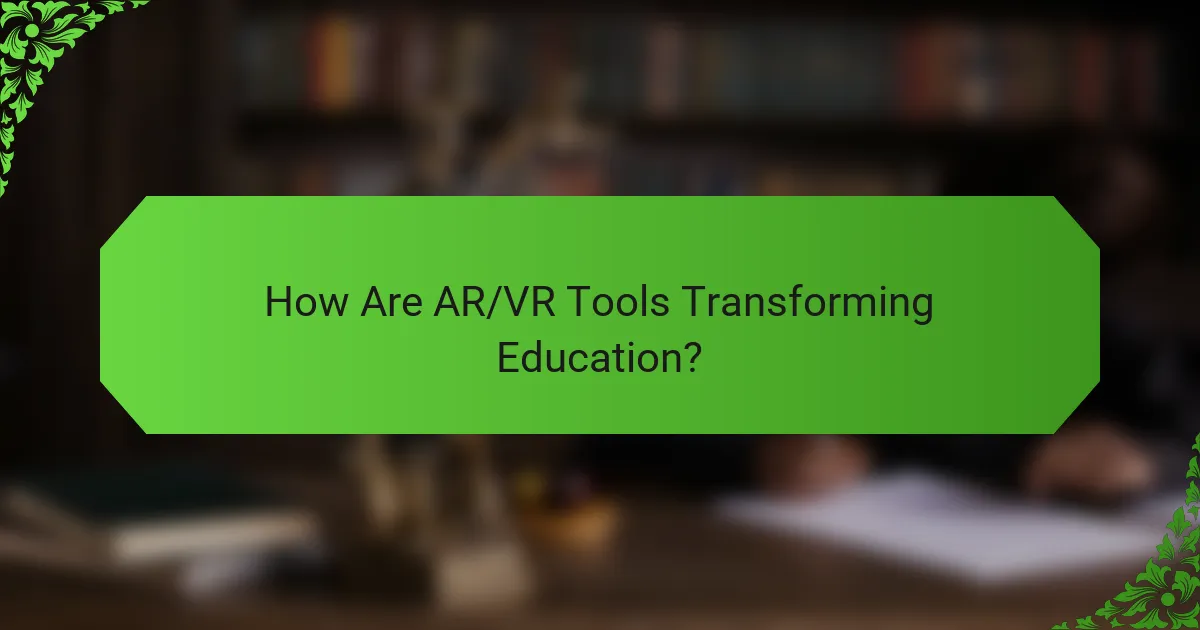
How Are AR/VR Tools Transforming Education?
AR and VR tools are revolutionizing education by creating immersive learning environments that enhance student engagement and understanding. These technologies allow learners to interact with content in ways that traditional methods cannot, fostering deeper connections to the material.
Enhanced engagement through immersive experiences
Immersive experiences provided by AR and VR capture students’ attention more effectively than conventional teaching methods. By placing learners in simulated environments, they can explore concepts actively rather than passively absorbing information.
For instance, a history class might use VR to transport students to ancient civilizations, allowing them to experience historical events firsthand. This level of engagement can lead to improved retention and enthusiasm for learning.
Personalized learning pathways
AR and VR technologies enable personalized learning experiences tailored to individual student needs. These tools can adapt content and pacing based on a learner’s progress, ensuring that each student receives the support they require.
For example, a student struggling with a math concept can engage with interactive VR simulations that provide step-by-step guidance, while advanced learners can explore more complex scenarios. This adaptability helps maintain motivation and fosters a growth mindset.
Real-world simulations for practical skills
Real-world simulations using AR and VR prepare students for practical applications of their knowledge. These tools allow learners to practice skills in a safe environment, making mistakes without real-world consequences.
In fields such as medicine, students can use VR to perform virtual surgeries, gaining hands-on experience before working with real patients. Similarly, engineering students can engage in simulations that replicate real-life challenges, enhancing their problem-solving abilities.
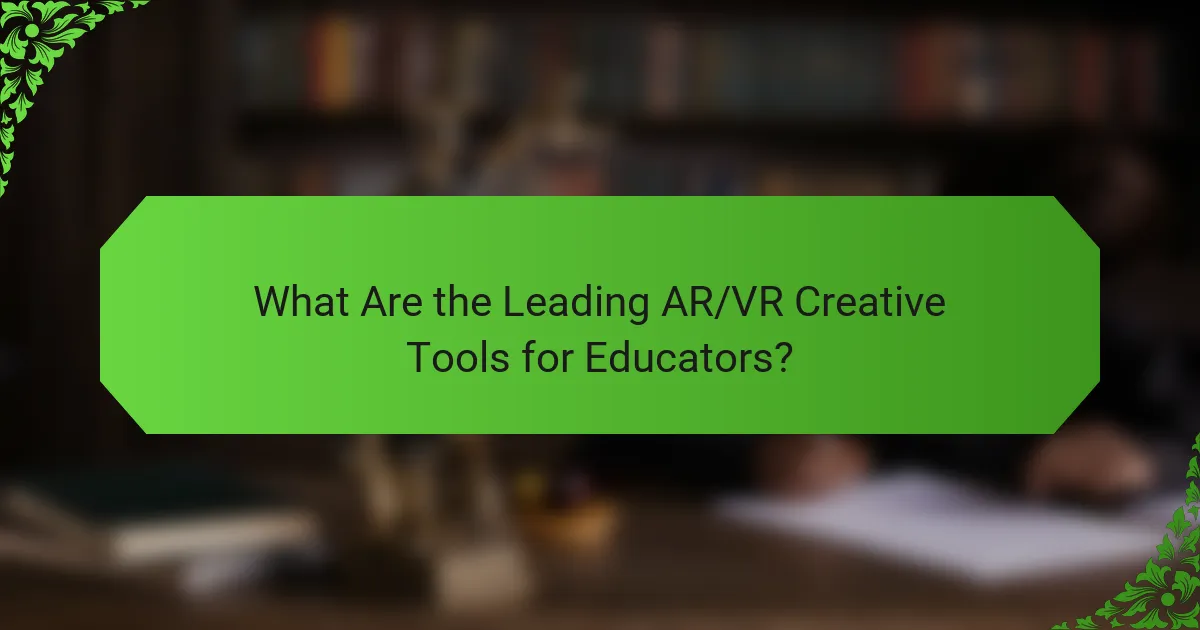
What Are the Leading AR/VR Creative Tools for Educators?
The leading AR/VR creative tools for educators include platforms that enhance interactive learning experiences. These tools allow teachers to create immersive environments that engage students and facilitate deeper understanding of complex subjects.
Google Expeditions
Google Expeditions is a virtual reality platform that enables educators to take students on virtual field trips around the world. Teachers can guide students through 360-degree environments, providing a rich context for learning about geography, history, and science.
This tool is user-friendly and requires minimal setup, making it accessible for classrooms of varying technological capabilities. Educators can choose from a library of pre-made expeditions or create their own, allowing for tailored learning experiences.
Nearpod
Nearpod is an interactive learning tool that combines AR and VR elements to create engaging lessons. Educators can integrate multimedia content, quizzes, and virtual reality experiences into their presentations, making lessons more dynamic and interactive.
With features like real-time assessment and student feedback, Nearpod helps teachers gauge understanding and adjust instruction accordingly. It is particularly effective in promoting student participation and collaboration during lessons.
Unity
Unity is a powerful game development platform that educators can use to create custom AR and VR applications. While it requires more technical knowledge than other tools, it offers extensive capabilities for designing interactive educational experiences.
Teachers interested in using Unity should consider starting with tutorials and community resources to build their skills. This platform is ideal for advanced projects where customization and interactivity are essential, allowing for unique educational applications tailored to specific learning objectives.
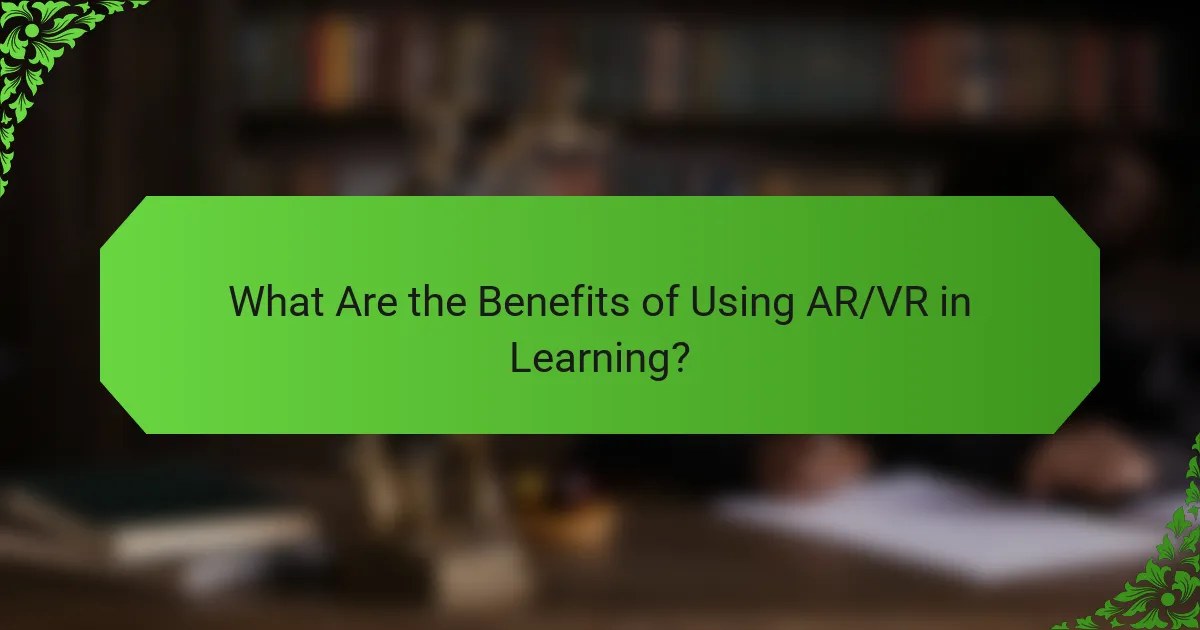
What Are the Benefits of Using AR/VR in Learning?
AR and VR technologies enhance learning by providing immersive experiences that improve engagement and understanding. These tools allow learners to visualize complex concepts and interact with content in a way that traditional methods cannot achieve.
Improved retention rates
Using AR and VR in educational settings has been shown to significantly boost retention rates among students. Immersive experiences help learners better remember information by creating strong mental associations with the material.
For instance, a student studying anatomy can explore a 3D model of the human body, leading to a deeper understanding and longer-lasting knowledge than through textbooks alone. Research suggests that retention can improve by up to 70% when using these technologies compared to conventional learning methods.
Increased motivation and interest
AR and VR capture learners’ attention and spark their interest in subjects that may otherwise seem dull. The interactive nature of these technologies encourages active participation, making learning more enjoyable.
For example, virtual field trips allow students to explore historical sites or scientific phenomena without leaving the classroom, fostering curiosity and enthusiasm for the subject matter. This heightened engagement can lead to improved academic performance and a greater desire to learn.
Collaboration opportunities
AR and VR facilitate collaborative learning experiences, allowing students to work together in virtual environments regardless of their physical location. This promotes teamwork and communication skills essential for the modern workforce.
In practice, students can engage in group projects within a shared virtual space, brainstorming ideas and solving problems collectively. These collaborative experiences can enhance social interaction and build a sense of community among learners, which is particularly beneficial in remote or hybrid learning environments.
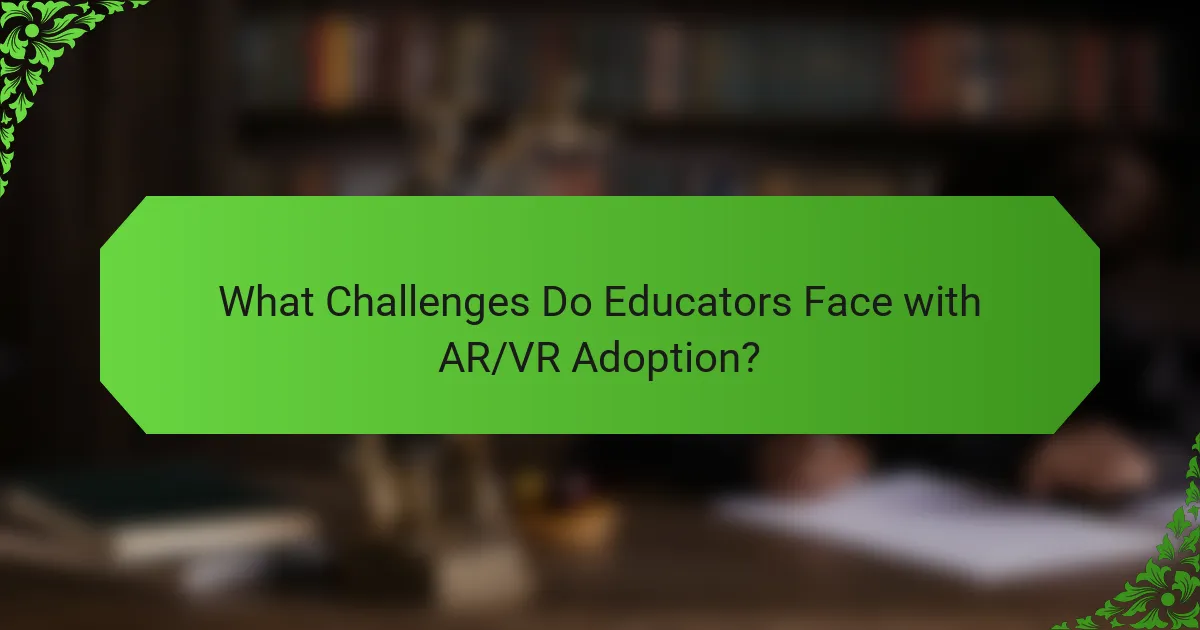
What Challenges Do Educators Face with AR/VR Adoption?
Educators encounter several significant challenges when adopting AR/VR technologies, including high costs, insufficient training, and technical issues. These obstacles can hinder the effective integration of immersive learning experiences in educational settings.
High costs of implementation
The high costs associated with AR/VR implementation can be a major barrier for educational institutions. Initial investments in hardware, software, and content creation can reach thousands of dollars, making it difficult for schools with limited budgets to adopt these technologies.
Additionally, ongoing expenses for maintenance, updates, and subscriptions can add to the financial burden. Schools must weigh the potential benefits against these costs to determine if AR/VR is a feasible option for their curriculum.
Lack of training for educators
A significant challenge in AR/VR adoption is the lack of training available for educators. Many teachers are not familiar with these technologies and may feel overwhelmed by the prospect of integrating them into their lessons.
Professional development programs focused on AR/VR are still emerging, leaving many educators without the necessary skills to effectively utilize these tools. Schools should prioritize training initiatives to empower teachers and enhance their confidence in using AR/VR in the classroom.
Technical issues and accessibility
Technical issues, such as software glitches and hardware malfunctions, can disrupt the learning experience and frustrate both educators and students. Ensuring that AR/VR systems are reliable and user-friendly is crucial for successful implementation.
Moreover, accessibility remains a concern, as not all students may have equal access to the required devices or internet connectivity. Schools need to consider these factors and explore solutions to ensure all students can benefit from AR/VR learning opportunities.
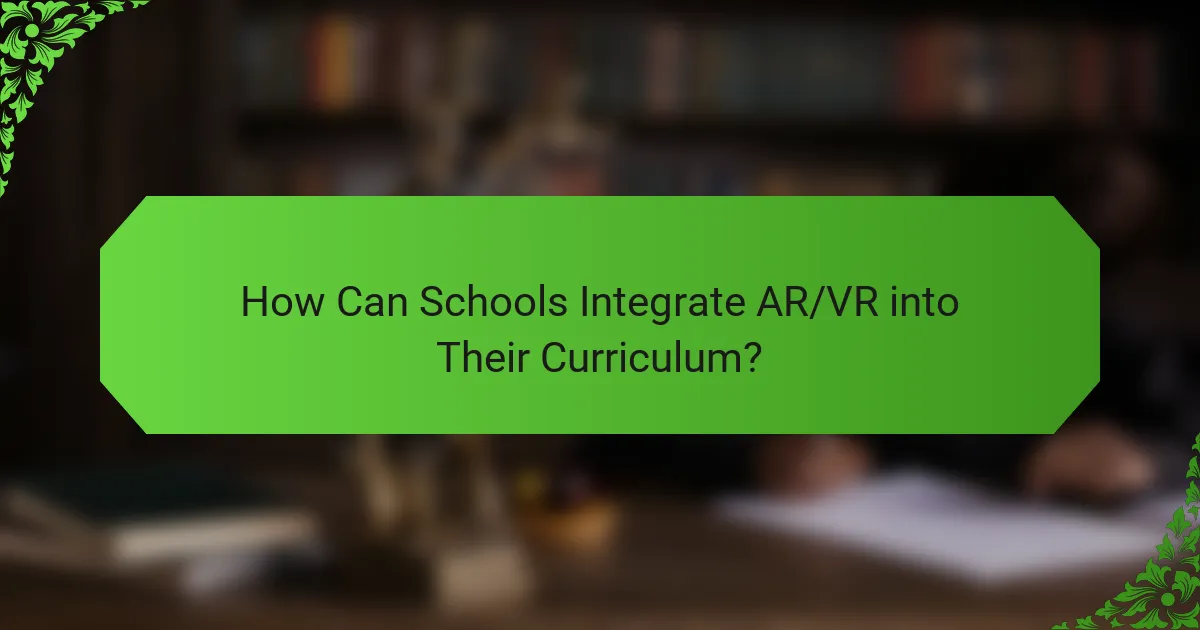
How Can Schools Integrate AR/VR into Their Curriculum?
Schools can effectively integrate AR/VR into their curriculum by adopting innovative teaching methods that enhance student engagement and understanding. This involves creating immersive learning experiences that align with educational goals and standards.
Developing AR/VR lesson plans
When developing AR/VR lesson plans, educators should focus on aligning the technology with curriculum objectives. Start by identifying key learning outcomes and then design activities that utilize AR/VR to achieve those goals. For example, a history lesson could use AR to bring historical events to life, allowing students to explore ancient civilizations interactively.
Consider incorporating a variety of AR/VR tools and resources to cater to different learning styles. This can include virtual field trips, simulations, or interactive 3D models. It’s essential to pilot these lesson plans and gather feedback to refine the approach.
Partnering with tech companies
Partnering with tech companies can provide schools with access to the latest AR/VR tools and expertise. Collaborations can lead to customized solutions that fit specific educational needs, such as tailored software or hardware donations. Schools should seek partnerships that offer training for teachers to effectively use these technologies in the classroom.
Additionally, tech companies often have resources for curriculum development and can assist in creating engaging content. Establishing a relationship with local tech firms may also open doors for internships and real-world learning opportunities for students.
Creating a dedicated AR/VR lab
Creating a dedicated AR/VR lab can significantly enhance a school’s ability to integrate these technologies into learning. This space should be equipped with the necessary hardware, such as VR headsets and AR devices, as well as software that supports various educational applications. A well-designed lab can serve as a hub for innovation and creativity.
Consider the layout and resources of the lab to facilitate collaborative projects and hands-on learning. Providing training for both teachers and students on how to use the equipment effectively is crucial. Regularly updating the technology and software will ensure that the lab remains relevant and useful for educational purposes.
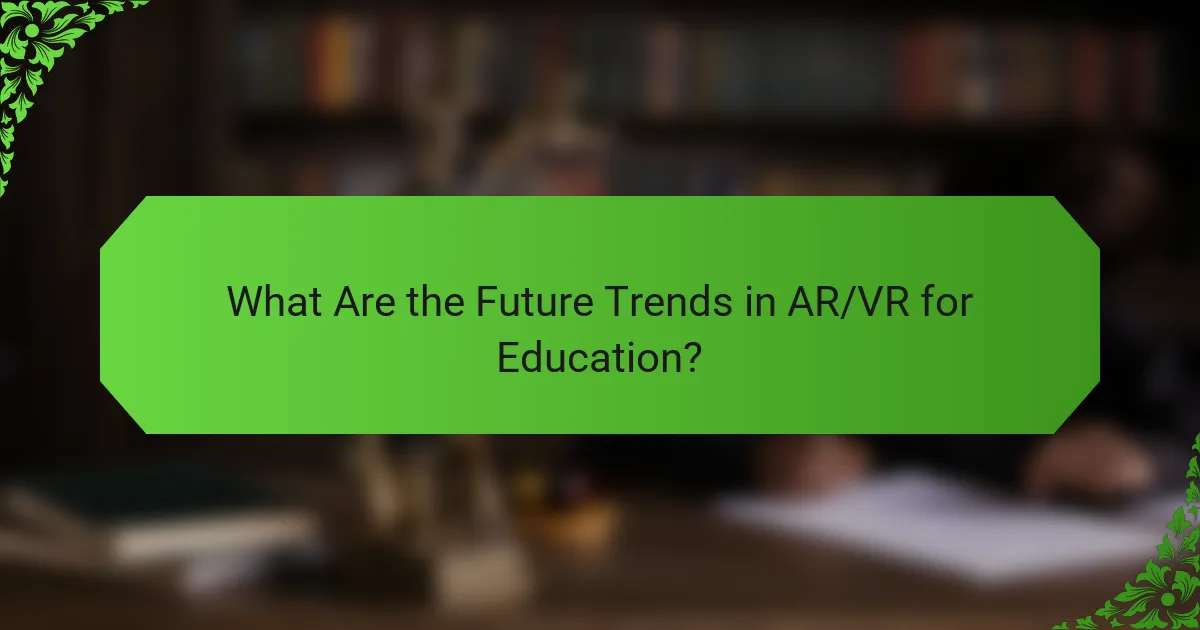
What Are the Future Trends in AR/VR for Education?
The future of AR/VR in education is marked by enhanced interactivity and personalized learning experiences. These technologies are increasingly being integrated into curricula, offering immersive environments that engage students and facilitate deeper understanding of complex subjects.
Increased use of AI in AR/VR tools
Artificial intelligence is set to play a pivotal role in the evolution of AR/VR educational tools. By analyzing user interactions and learning patterns, AI can tailor experiences to meet individual student needs, making learning more effective and engaging.
For instance, AI can create adaptive learning environments where the difficulty of tasks adjusts in real-time based on a student’s performance. This personalization helps maintain motivation and ensures that learners are appropriately challenged.
Educators should consider integrating AI-driven AR/VR tools that offer analytics and feedback. These insights can help teachers identify areas where students struggle, allowing for timely interventions and support.